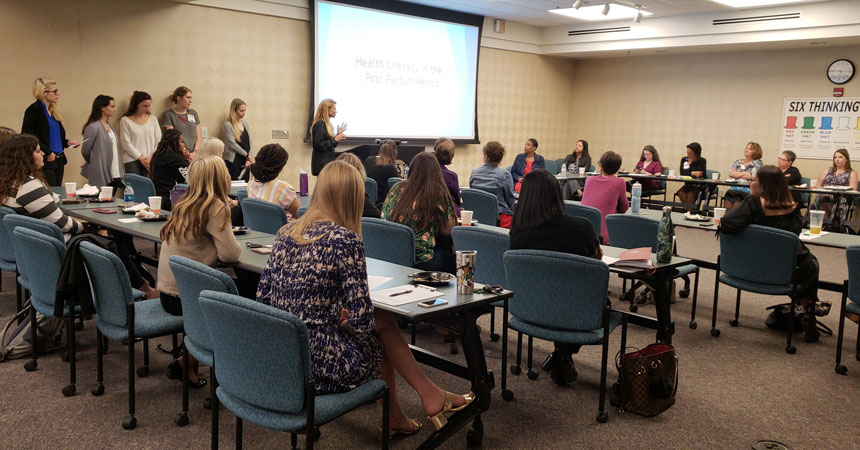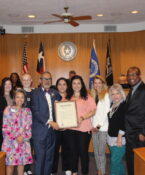UNTHSC and TCU develop new online tool for new moms’ health questions
Because a mother’s health is so important to that of her baby, a team from UNT Health Science Center has joined with TCU’s Harris College of Nursing and families across Tarrant County to develop a new online tool for helping postpartum moms take care of their health.
Learn more about the “What About Mom?” Online Symptom Checker |
This tool, an easy-to-use, online symptom checker for mothers just home from the hospital, is now being adopted for use across the country by the National Institute on Minority Health and Disparities (NIMHD).
The idea initiated with Dr. Teresa Wagner, a leading Texas health literacy advocate, who serves as Assistant Professor with the UNTHSC School of Public Health, Senior Fellow for Health Literacy with SaferCare Texas, and Fellow and Project Director for the Texas Center for Health Disparities, which funds the project.
Over the last year, Dr. Wagner and UNTHSC student mentee Amber Gadson (TCOM class of ’20) talked with local parents about the health questions and concerns new mothers face when leaving the hospital. TCU nursing students and faculty interviewed maternity nurses and community health workers for their insights into new mothers’ educational needs and the cultural appropriateness of health materials provided.
With assistance from TCU computer science students, the team used this information to build an online symptom checker called “What About Mom?” where parents can learn about potential health warning signs and what to do.
“Coming home from the hospital with a new baby is hard, whether you’re a first-time parent or have done it before,” Dr. Wagner said. “New moms are so busy. They may not always recognize when a problem of their own might require a call to the doctor or a visit to the emergency room. Elevated blood pressure, heart problems, signs of infection, even feelings of depression can have a profound impact on mothers’ health and could become dangerous if overlooked.”
The symptom checker also includes a section for partners, who may be the first to recognize the unusual,” Dr. Wagner said.
“If mom seems overly exhausted, isn’t eating or feeling well, comes across as sad or overwhelmed, or has concerning physical symptoms, there is a lot that partners can do for support and to help ensure health and safety,” she added.
Gadson, who connected with families through Healthy Start, a partner on the research project, learned a lot from the community interviews and overall experience, as did TCU’s nursing students.
Through two classes over the fall and spring, TCU’s future nurses joined Dr. Wagner for interprofessional (IPE) learning activities on health literacy and worked under the guidance of their professor, Marie Stark, RNC, to update new mother discharge materials typically distributed through hospitals. The resulting new brochure prototypes – simplified and presented in easily-understandable terms versus “medical speak” – helped Gadson talk to parents about how they prefer to receive health information.
“The brochures were well received, as was the idea of a web-based resource,” Gadson said. “Most moms said they didn’t have time to flip through packets of paperwork while caring for a baby. They wanted quick and easy health resources.”
For Stark, a longtime nurse and veteran educator, the partnership between TCU and UNTHSC has helped expand Tarrant County’s focus on maternal and child health and has the potential to reach even more families now that NIMHD plans to adopt the web-based tool.
“This project is unique and specific to the health of new mothers,” Stark said. “After delivery, moms might have questions like, why do I feel this way, should I call the doctor, or they may not recall all the instructions provided at the hospital. If the information is too complicated, unclear or patients don’t remember, how likely are they to get the care they might need?”
Jennifer Haston and Alexandra Wuller, new nursing graduates who worked on the project, both said it has given them a better perspective on communications with patients and families.
“It’s up to us to ask questions, listen to what patients are saying and provide health information in ways that work for them,” Haston said.
Wuller said she has learned much about the “absolutely positive, impactful way” that education and health literacy can address maternal mortality.
“Health literacy is critical, especially when a new mom returns home in a very vulnerable state,” she said. “Knowledge is key, knowledge is power and in these situations, knowledge may be the difference between life and death.”





Social media